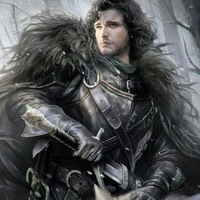
Допоможіть будь ласка!! девʼятий клас 1. Розкажіть про добу Просвітництва у Німеччині, його
представників та їх діяльність. Проаналізуйте одну з поезій Гете. 2. Розкажіть про історію створення та композицію роману «Мандри Гуллівера». У чому виявляються риси Просвітництва у цьому творі? Які види комічного використав автор? 0
0
 0
0
Ответы на вопрос
 Внимание! Ответы на вопросы дают живые люди. Они могут содержать ошибочную информацию, заблуждения, а также ответы могут быть сгенерированы нейросетями. Будьте внимательны. Если вы уверены, что ответ неверный, нажмите кнопку "Пожаловаться" под ответом.
Внимание! Ответы на вопросы дают живые люди. Они могут содержать ошибочную информацию, заблуждения, а также ответы могут быть сгенерированы нейросетями. Будьте внимательны. Если вы уверены, что ответ неверный, нажмите кнопку "Пожаловаться" под ответом.

Відповідь:
1. Доба Просвітництва (Aufklärung) у Німеччині:
Доба Просвітництва у Німеччині припадає на 18 століття і була частиною загальноєвропейського руху Просвітництва, що прагнув розповсюдження знань, логіки, розуму та гуманізму. Один із її головних принципів полягав у вірі в розум людини та її здатність до саморозвитку. Важливими аспектами німецького Просвітництва були освіта, мораль, суспільний прогрес та громадянські свободи.
Представники німецького Просвітництва включають:
- Готфріда Вільгельма Лейбніца: філософ, математик і винахідник, відомий своєю філософією монад та ідеями про гармонію в природі.
- Іммануїла Канта: найвідоміший філософ та автор "Критики практичного розуму" і "Критики чистого розуму". Він розвинув поняття автономії та обов'язку в етиці та вірив у важливість розуму.
- Йоганн Вольфганг фон Гете: відомий німецький поет, драматург і романіст, автор багатьох видатних творів, таких як "Фауст" і "Ліота".
Щодо Гете, його твори, особливо "Фауст," відображають ключові ідеї Просвітництва, такі як боротьба людини за знання, саморозвиток і визначення власного життя. "Фауст" розглядає питання моралі, справедливості, знань і віри. Головний герой, Фауст, шукає істиною і щасливим життям, але його шлях сповнений моральними дилемами та важливими виборами.
2. Роман "Мандри Гуллівера" (Gulliver's Travels):
"Мандри Гуллівера" - це роман, написаний англійським письменником Джоном Свіфтом у 1726 році. Твір розповідає про пригоди Лемюеля Гуллівера, лікаря та мандрівника, який відвідує різні фантастичні країни, де він стикається з дивними цивілізаціями та розкриває патологічні риси суспільства.
У романі "Мандри Гуллівера" виявляються риси Просвітництва через критику суспільства і пропонування альтернативних підходів до громадянської моралі та політики. Глави книги представляють різні країни з різними соціальними та політичними системами, і кожна з них є алегорією різних аспектів суспільства. Свіфт використовує гумор і сатиру для висміювання вад сучасного суспільства, а це було характерно для Просвітництва.
У романі також присутні різні види комічного, такі як гумор, іронія, абсурд та сарказм. Сам факт зіставлення Лемюеля Гуллівера з різними культурами та суспільствами, які він відвідує, призводить до комічних ситуацій і висміює сутність людських недоліків та парадоксів.
Узагальнюючи, роман "Мандри Гуллівера" Джонатана Свіфта є важливим твором Просвітництва, яке не лише критикує сучасне суспільство, але й використовує різні види комічного для цього.
 0
0
 0
0

The Enlightenment in Germany and its Representatives
The Enlightenment, also known as the Age of Reason, was a cultural and intellectual movement that swept across Europe during the 18th century. It emphasized reason, science, and individualism, challenging traditional authority and promoting ideas of liberty, equality, and progress. In Germany, the Enlightenment had a significant impact on various aspects of society, including literature, philosophy, and politics.
One of the key representatives of the Enlightenment in Germany was Johann Wolfgang von Goethe. Goethe was a prominent writer, poet, and philosopher who played a crucial role in shaping German literature and culture. His works reflected the ideals of the Enlightenment, exploring themes of individualism, rationality, and the pursuit of knowledge.
Analysis of a Goethe Poem
To analyze one of Goethe's poems, let's take a closer look at "Der Erlkönig" ("The Erlking"). This poem, published in 1782, tells the story of a father riding through the night with his sick child, who is tormented by the supernatural figure of the Erlking. The poem explores themes of fear, death, and the power of imagination.
In "Der Erlkönig," Goethe skillfully uses various poetic techniques to create a sense of tension and suspense. The poem is written in ballad form, with a consistent rhythm and rhyme scheme, which contributes to its musicality and dramatic effect. Goethe also employs vivid imagery and descriptive language to evoke a haunting atmosphere, drawing the reader into the narrative.
The poem can be interpreted as a reflection of the Enlightenment's emphasis on reason and the struggle between rationality and superstition. The father represents reason and logic, trying to reassure his child that the Erlking is merely a figment of their imagination. However, the child's fear and belief in the supernatural ultimately overpower reason, leading to a tragic ending.
History and Composition of "Gulliver's Travels"
"Gulliver's Travels" is a satirical novel written by Jonathan Swift and first published in 1726. The novel follows the adventures of Lemuel Gulliver, a ship's surgeon who finds himself in various fantastical lands inhabited by unusual creatures and societies. Through Gulliver's encounters, Swift satirizes various aspects of 18th-century European society, including politics, science, and human nature.
The novel is divided into four parts, each describing Gulliver's visit to a different land. In Lilliput, Gulliver encounters a race of tiny people, while in Brobdingnag, he encounters giants. In Laputa, Gulliver visits a floating island inhabited by impractical intellectuals, and in Houyhnhnmland, he encounters a society of rational horses.
Through these encounters, Swift highlights the follies and vices of human society, using satire to criticize political corruption, religious intolerance, and the misuse of science. The novel's composition allows Swift to explore different aspects of society and present contrasting perspectives, ultimately inviting readers to reflect on their own society and its flaws.
Enlightenment Elements in "Gulliver's Travels"
"Gulliver's Travels" exhibits several characteristics of the Enlightenment. One of the key features is Swift's use of satire to criticize societal institutions and human behavior. By presenting exaggerated and absurd scenarios, Swift challenges the prevailing norms and beliefs of his time, encouraging readers to question authority and think critically.
The novel also reflects the Enlightenment's emphasis on reason and rationality. Gulliver, as a representative of the Enlightenment, approaches each new society with curiosity and attempts to understand it through observation and analysis. However, he often finds that the societies he encounters are flawed and corrupted by human nature.
Furthermore, "Gulliver's Travels" explores the theme of cultural relativism, questioning the idea of one society's superiority over another. Gulliver's encounters with different societies challenge his own preconceived notions and force him to reevaluate his beliefs, highlighting the importance of tolerance and open-mindedness.
Types of Comedy in "Gulliver's Travels"
Swift employs various types of comedy in "Gulliver's Travels" to satirize different aspects of society. One type is irony, where there is a contrast between what is expected and what actually happens. For example, in Lilliput, Gulliver is initially seen as a giant and a threat, but as the story progresses, it becomes clear that the Lilliputians' obsession with trivial matters and their petty politics are the real sources of absurdity.
Another type of comedy used by Swift is parody, where he imitates and mocks specific literary styles or genres. For instance, in the land of Laputa, Swift parodies the scientific and intellectual pursuits of his time, portraying the inhabitants as detached from reality and consumed by impractical experiments.
Lastly, satire is a prevalent form of comedy in "Gulliver's Travels." Satire involves using humor, irony, or exaggeration to criticize and expose the flaws and vices of individuals, institutions, or society as a whole. Swift's satirical targets include political corruption, religious intolerance, and the arrogance of human beings.
Overall, "Gulliver's Travels" is a multi-layered work that combines elements of adventure, satire, and social commentary. It serves as a critique of 18th-century society while embodying the spirit of the Enlightenment through its emphasis on reason, satire, and the exploration of different societies and cultures.
 0
0
 0
0
Похожие вопросы
Топ вопросов за вчера в категории Литература
Последние заданные вопросы в категории Литература
-
Математика
-
Литература
-
Алгебра
-
Русский язык
-
Геометрия
-
Английский язык
-
Химия
-
Физика
-
Биология
-
Другие предметы
-
История
-
Обществознание
-
Окружающий мир
-
География
-
Українська мова
-
Информатика
-
Українська література
-
Қазақ тiлi
-
Экономика
-
Музыка
-
Право
-
Беларуская мова
-
Французский язык
-
Немецкий язык
-
МХК
-
ОБЖ
-
Психология
-
Физкультура и спорт
-
Астрономия
-
Кыргыз тили
-
Оʻzbek tili

























